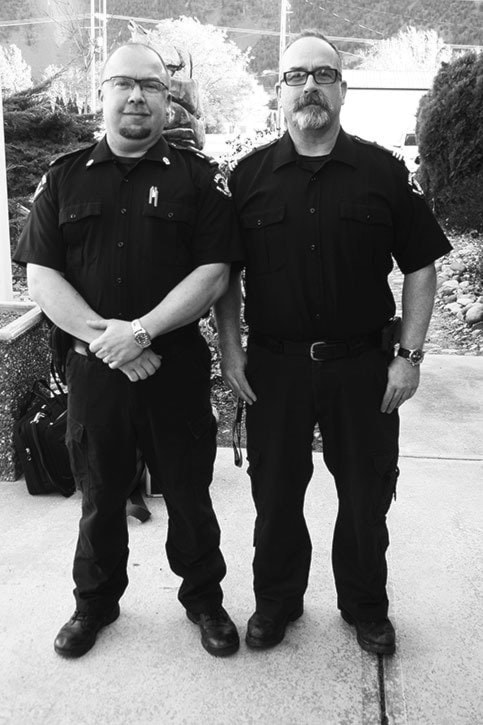Longtime Keremeos paramedics Tim Roberts and Tom Robins will complete their community paramedic training at the end of May and are expecting to take on patient visits soon after.
Both men have a long history in the community with Roberts working in Keremeos 15 years ago and Robins 25 years ago. They’ve both served on the Keremeos fire department as well.
“We’re at an advantage that people (community paramedics) coming in fresh to a community might not have because they need time to build up contacts and connections. But then we are also a little impatient because we see how we can help people now but we need to finish our training,” Roberts said during a presentation to Keremeos council Monday night.
The idea behind the community paramedic program is to help keep people stay in their homes by creating a larger health care team that can monitor chronic illness conditions or recovery from injury or illness in the community opposed to having to take the person to hospital once they hit crisis.
The community paramedic program will be offered for 40 hours a week, with each paramedic working two-10 hour shifts a week.
They won’t be arriving via ambulance as there is a separate vehicle dedicated to community paramedicine.
There will not be a reduction in ambulance service either as the community paramedic program is different than the ambulance service.
Roberts and Robins will continue as regular paramedics as well.
Depending on client needs Roberts and Robins might visit people to check blood pressure, assist with diabetic care, help identify fall hazards, complete medication assessments, post injury or illness evaluations or might help someone who has a respiratory condition.
The work will be different than they are used to considering as paramedics the window of treatment was brief. The men treated people on the scene in emergency situations often resulting in the person needing to be transported to hospital. Now, they will be working to manage people’s health to avoid taking them to the hospital.
“I worked three years in Kelowna and I can’t tell you how many times I thought ‘let’s have a tea and I’ll sit here and hold your hand and check on things while you calm down,’ but instead we would have to load them up into the ambulance and they’d spend eight to 10 hours in emergency,” Robins said.
Clients will have to be referred by a physician to be part of the community paramedic program.
Paramedics will perform assessments requested by the referring health-care professional, and record their findings for the patient’s file. The enhanced role will not replace care provided by health professionals such as nurses, but will complement and support their work.
The community paramedic program started in 2015 in neighbouring community Princeton and also in Creston. It was announced last April it would be expanded into Keremeos and several other communities in the Interior. By the time it is fully rolled out 73 communities throughout BC will have a community paramedic program in place.
